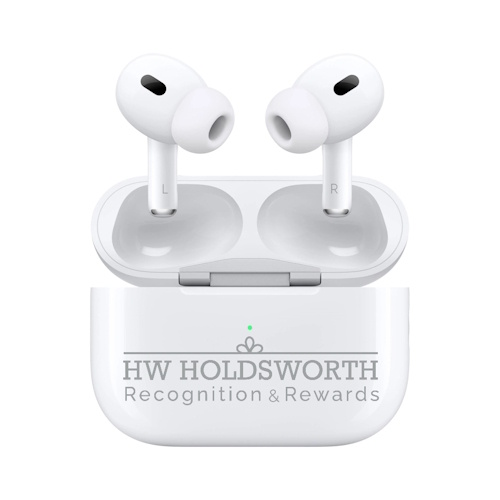Employee Recognition Solutions
In today's competitive business environment, recognising employees isn't just a nice-to-have; it's a strategic necessity.
Employee recognition solutions play a pivotal role in boosting employee engagement, enhancing wellbeing, fostering recognition, improving retention, and strengthening corporate branding. At HW Holdsworth, we offer various employee recognition solutions that can have a profound impact on your organisation.

Why Employee Recognition Matters
Employee recognition is more than just a pat on the back or an annual bonus. It's about creating a culture where employees feel valued and appreciated for their contributions. When employees feel recognised, they're more likely to be engaged, motivated, and loyal. This directly impacts your company's bottom line, reducing turnover and increasing productivity.
Boosting Employee Engagement
Employee engagement refers to the emotional commitment an employee has towards their organisation and its goals. Recognising employees for their hard work and achievements is a powerful way to boost engagement. Engaged employees are more productive, more likely to stay with the company, and more inclined to promote the organisation externally.
Enhancing Employee Wellbeing
Employee wellbeing is a holistic approach to health, encompassing physical, mental, and emotional health. Recognition can significantly impact an employee's wellbeing. Feeling valued and appreciated at work can reduce stress, improve job satisfaction, and promote a positive work-life balance.
Effective Employee Recognition Solutions
There are various ways to recognise employees, and the best approach depends on your company's culture and resources. Here are some effective employee recognition solutions to consider:
Peer-to-Peer Recognition
Encouraging employees to recognise each other's efforts is a powerful way to build a supportive workplace culture. Peer-to-peer recognition can take many forms, such as shout-outs during meetings, thank-you notes, or digital platforms that allow employees to give kudos to their colleagues.
Performance-Based Rewards
Performance-based rewards are a traditional yet effective way to recognise employees. These rewards can include points to redeem, bonuses, salary increases, or promotions based on an employee's performance. It's crucial to ensure that these rewards are fair, transparent, and based on clear criteria.


Personalised Recognition
Personalised recognition makes employees feel truly valued. This could be as simple as a handwritten note from a manager or a personalised gift. The key is to tailor the recognition to the individual, acknowledging their unique contributions and preferences.
Recognition Programs and Platforms
Implementing a formal recognition program or platform can streamline the process and ensure consistency. Many companies use digital platforms that allow employees and managers to easily recognise and reward each other. These platforms often include features like leaderboards, badges, and points systems that can be redeemed for various rewards.
The Impact of Employee Recognition on Retention
Employee retention is a significant concern for many organisations. High turnover rates can be costly and disruptive. Recognition plays a critical role in improving retention by making employees feel appreciated and valued, thus reducing the likelihood of them seeking opportunities elsewhere.
Building a Positive Work Environment
A culture of recognition fosters a positive work environment where employees feel respected and appreciated. This environment encourages loyalty and reduces the desire to leave the company. Employees who feel valued are more likely to stay, reducing turnover and the associated costs.
Encouraging Career Development
Recognition can also be tied to career development opportunities. When employees see that their hard work is recognised and rewarded with advancement opportunities, they are more likely to remain with the company. This not only improves retention but also helps in building a skilled and experienced workforce.


Enhancing Corporate Branding Through Recognition
Corporate branding is not just about how customers perceive your company; it's also about how employees view it. A strong employer brand can attract top talent and retain existing employees. Recognition plays a vital role in enhancing corporate branding by creating a positive image of the company as a great place to work.
Attracting Top Talent
A company known for its strong recognition culture is more likely to attract top talent. Prospective employees are drawn to organisations where they know their contributions will be valued and rewarded. This can give your company a competitive edge in the talent market.
Strengthening Employer Brand
Recognition not only helps in attracting new talent but also strengthens your employer brand internally. Employees who feel recognised are more likely to speak positively about the company, becoming brand ambassadors. This positive word-of-mouth can significantly enhance your company's reputation.
Implementing Employee Recognition Solutions
Implementing effective employee recognition solutions requires careful planning and execution. Here are some steps to get you started:
Assess Your Current Recognition Practices
Set Clear Goals and Objectives
Choose the Right Recognition Solutions
Communicate and Train
Monitor and Adjust
Conclusion
Employee recognition is a powerful tool for enhancing employee engagement, wellbeing, retention, and corporate branding. By implementing effective recognition solutions, you can create a positive workplace culture where employees feel valued and motivated. This not only benefits your employees but also strengthens your organisation as a whole. Remember, recognition is not just about rewards; it's about creating a culture of appreciation that drives success.
